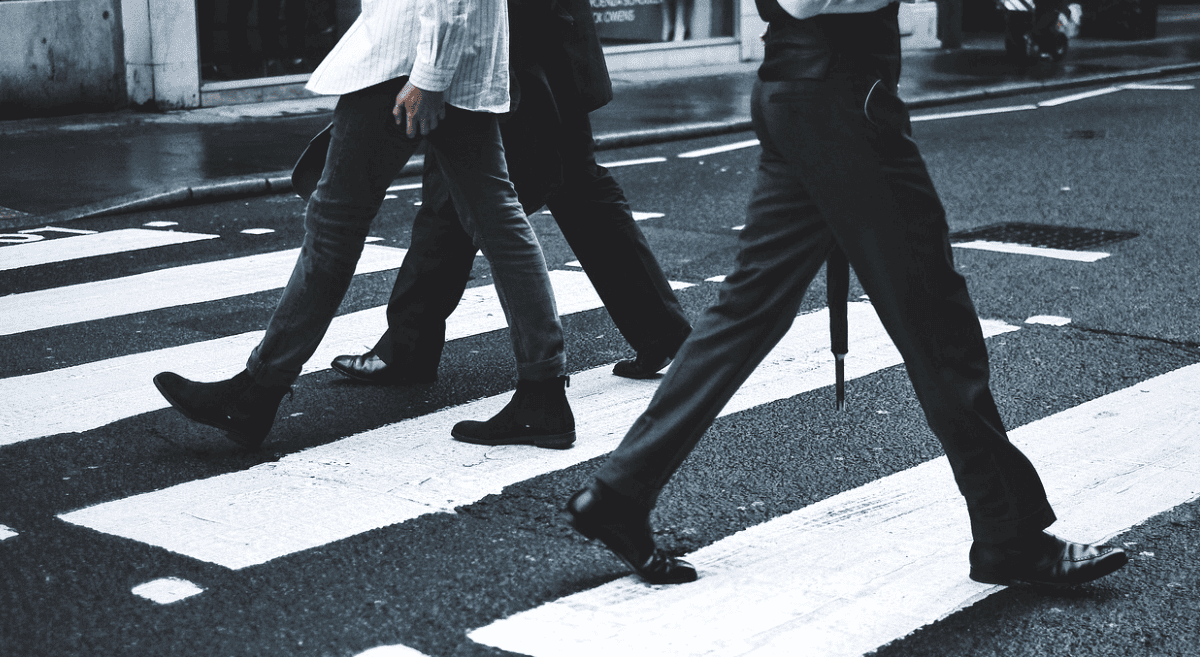
Unfortunately, pedestrian accidents are common occurrences. We see this in the statistics reported by the Department of Health and Human Services of Nebraska between 2008 and 2012. The report states that pedestrian deaths accounted for 14 percent of traffic fatalities across the country. In the same period, Nebraska saw about 10 pedestrian fatalities and over 2,200 injuries in traffic accidents each year.
Such accidents can result in severe injuries and fatalities. That is why pedestrians should learn about liability and their legal rights – both to avoid and handle these unfortunate situations. This knowledge encourages individuals to navigate roadways more safely and equips them with the necessary information on what to do after an accident.
If you or a loved one has been hit by a vehicle as a pedestrian in Nebraska, contact a pedestrian accident lawyer today. The Omaha pedestrian accident attorneys at Hauptman, O’Brien, Wolf & Lathrop are here to help.
Nebraska Laws That Protect Pedestrians
Nebraska, like many states, has laws in place to ensure pedestrian safety on the roads. These laws define the rights and responsibilities of both pedestrians and drivers.
For instance, Nebraska laws protect pedestrians by requiring drivers to:
- Yield at crosswalks
- Obey signals
- Refrain from passing stopped vehicles
- Follow reduced speeds in school zones, and;
- Avoid texting while driving
Crosswalks and right-of-way
In Nebraska, pedestrians have the right-of-way on both marked and unmarked crosswalks. Therefore, drivers must yield to pedestrians crossing the road within these designated areas. At the same time, though, pedestrians must also exercise caution.
As a pedestrian, you should avoid:
- Suddenly leaving a curb or safe area
- Walking or running into the path of a vehicle that is too close to yield
- Crossing when the signal is red
Shared road spaces
Both pedestrians and drivers must be watchful in shared road spaces, which include:
- Residential streets without sidewalks or crosswalks
- Rural roads with few pedestrian features
- Parking lots in shopping areas
- Narrow lanes in cities
- Bike lanes shared with pedestrians and vehicles
In areas without crosswalks or intersections, pedestrians should yield to vehicles on the road by only crossing when it’s safe to do so. Without traffic signals or marked crossings, pedestrians must assess traffic flow and ensure there is enough time to cross the road safely.
Drivers, on the other hand, should be attentive, reduce speed, and be ready to stop for pedestrians who may be crossing the road. When behind the wheel, make sure to keep some space between you and pedestrians, giving them enough room to cross safely.
Determining Liability in a Nebraska Pedestrian Accident Case
In a car accident, motorcycle accident, or truck accident that also involved a pedestrian, identifying the at-fault party calls for finding the person or entity most responsible for the collision. Usually, the driver who hit the pedestrian is seen as the obvious liable party, but there may be others involved as well.
In Nebraska, liability for a pedestrian accident may fall on various parties, including:
- The driver, if he or she was careless or broke traffic rules
- The pedestrian, if he or she acted recklessly or didn’t take proper steps to ensure safety
- The government agency in charge of road maintenance and safety
- The manufacturers or entities accountable for vehicle defects or malfunctioning signals
Factors Influencing Liability in Pedestrian Accidents
Determining liability in pedestrian accidents can be complex and depends on various factors.
A pedestrian accident lawyer can help you:
- Prove negligence
- Understand traffic laws
- Address shared fault situations
Negligence
Negligence is when someone behaves recklessly without considering the consequences of his or her actions. A negligent person is usually held liable in personal injury cases.
To prove negligence in your pedestrian accident case, the court must believe that:
- The other person was supposed to be careful but was not
- That person’s carelessness caused the accident
- The accident caused you damages, like lost wages and medical bills
A skilled attorney can help you prove these points by using supporting evidence, which may include:
- Accident reports
- Witness testimony
- Medical expert testimony
- Photos and videos
Traffic laws
Disregarding traffic regulations can impact liability. For example, a driver who runs a red light and hits a pedestrian in a crosswalk may be more likely to be found at fault. Similarly, if a pedestrian jaywalks and gets hit by a vehicle, he or she might be partly or fully to blame.
Other examples of traffic violations that affect liability are:
- Speeding in areas with heavy pedestrian traffic
- Illegal U-turns or improper lane changes near pedestrians
- Reckless driving behaviors, like aggressive maneuvers or racing
Nebraska fault laws
Nebraska follows a comparative fault system. This means that fault can be shared between multiple parties involved in an accident. If both the pedestrian and the driver are at fault, damages may be reduced based on each party’s degree of fault.
Shared fault in a pedestrian accident
Shared fault means that both the driver and the pedestrian share responsibility for an accident. Nebraska Revised Statutes §25-21,185.09 states that if the victim shares blame for the injury, his or her compensation will be reduced, but that person can still recover damages.
However, if someone is found to be 50 percent or more liable for the accident, that person is not eligible to receive compensation.
For example, if the court finds the driver 80 percent responsible and the pedestrian 20 percent responsible, the driver will be barred from recovering damages while the pedestrian will receive compensation accordingly. In such cases, compensation will be divided according to the court’s or jury’s decision.
Multiple-party liability
In Nebraska pedestrian accident cases, it’s common for multiple drivers to share responsibility. For economic damages, Nebraska drivers may face joint and several liability. This means they can be held collectively accountable.
However, for non-economic damages, a party may only be individually liable. This means that victims can seek compensation from any single driver for non-economic damages.
Legal Options for Pedestrians in Nebraska
Pedestrians injured in a Nebraska accident have several legal options available to them. They can file a claim, file a lawsuit, and hire a pedestrian accident lawyer to represent their interests.
File an insurance claim
Pedestrians injured in accidents may file a claim with the at-fault driver’s insurance company. The insurance adjuster may offer a settlement to compensate for injuries and other losses.
However, insurance companies may try to minimize payouts. Seeking legal guidance is therefore prudent in dealing with insurance claims.
Pursue a personal injury lawsuit
If a pedestrian’s injuries are severe or if insurance negotiations do not result in fair compensation, a personal injury lawsuit may be filed against the responsible driver. This legal option allows the injured pedestrian to seek compensation through the court system.
Seek legal representation
The legal process after a pedestrian accident can be challenging, especially while you recover from your injuries.
An experienced personal injury attorney can help injured pedestrians with the following:
- Understanding their legal rights
- Negotiating with insurance companies
- Pursuing compensation by means of a lawsuit if necessary
Reach Out to Our Pedestrian Accident Attorneys in Nebraska
Knowledge is power. When pedestrians or drivers understand liability and their legal rights, they are protected. For instance, understanding how liability is determined in Nebraska can help you know what to do with your potential pedestrian accident case. You can also benefit from having an experienced pedestrian accident lawyer handle negotiations and litigation for you.
When you’re injured by a negligent driver, you have the right to seek compensation for your damages. We urge you to contact our personal injury attorneys to find out how to protect your rights.
At Hauptman, O’Brien, Wolf & Lathrop, our attorneys are committed to guiding our clients through the challenges of establishing liability and legal rights. Call us at (402) 241-5020 or visit us online to schedule your FREE case review. There is no charge for your call.


David O’Neill at Hauptman, O’Brien Personal Injury Lawyers handled both of our cases and did excellent work. He communicates clearly, explains every step, returns calls, and follows through. Both cases moved forward smoothly with no confusion and no wasted time. If you need a personal injury attorney, contact David O’Neill because you will feel informed and supported from start to finish.